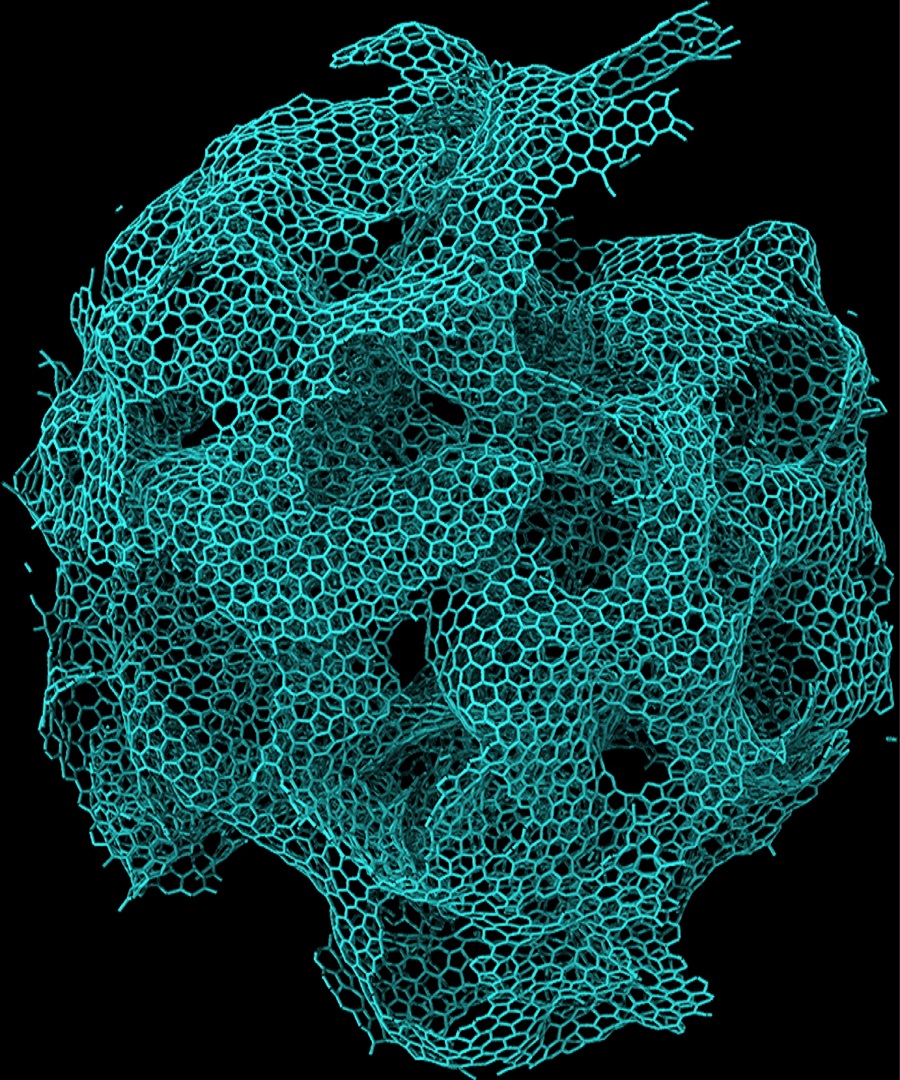Whether they’re riding the wind or toiling in conventional coal and gas plants, turbines harness mechanical energy to produce electrical power. But the heavy-duty materials in turbines are vulnerable to high temperatures and pressures and even chemical corrosion.
“Many materials cannot withstand high temperatures or high pressures, and they break,” says Rajiv Kalia, a computational physicist at the University of Southern California. “Cracks form and fractures occur.”
Kalia and colleagues use large-scale computations to design advanced materials that can heal themselves. Such materials would last longer and could reduce power plant shutdowns and repair downtime.
The critical challenge is finding and healing cracks before they cause a material to fail, Kalia says. So his team designs materials that use embedded nanoparticles as healing agents. The nanoparticles melt from stress-induced heat as materials crack. As cracks grow, the melting nanoparticles can flow into the fissures and mend them.
Finding the right combination of structural material and nanoparticles is difficult. Chemists and material scientists couldn’t possibly test all the possible combinations in the laboratory, and the time and materials would be prohibitively expensive.
Kalia and his team instead use parallel computing to investigate self-healing material combinations. They’re tapping an allocation of 180 million processor hours on Mira, Argonne National Laboratory’s IBM Blue Gene/Q supercomputer, through the Department of Energy’s INCITE (Innovative and Novel Computational Impact on Theory and Experiment) program.
Combining computational detail with long-duration chemistry leads to enormous calculations.
Kalia and his colleagues have used computational simulations to develop alumina ceramics – synthetic aluminum oxides – sturdier than those used in turbines. Although alumina can withstand high temperatures, it’s relatively brittle. When a crack forms, it moves through the material quickly, Kalia says. He and colleagues first simulated crack propagation in alumina alone to better understand how they might stop it.
Now the team is running a new simulation examining ways to heal cracks in alumina using embedded silicon carbide nanoparticles. As cracks form, a stress field moves through the material. As that field encounters a nanoparticle, the heat generated oxidizes its surface, changing it to silicon dioxide, also known as silica, the primary component in glass and many other ceramic materials. Once oxidized, the silica melts and flows into the crack. In addition, the toughness of silicon carbide remaining in the nanoparticles’ cores can deflect the crack’s strain energy, Kalia says.
The team’s simulations examine these materials at the level of billions of single atoms, using methods based on quantum mechanics and the computational principles of density functional theory. These tools yield a finely detailed picture of the behavior of each atom as it experiences mechanical stress. But researchers also need to understand how whole molecules and even nanoparticles interact inside these materials. So Kalia and his team use molecular dynamics calculations to understand the behavior and interactions of larger, micrometer-sized structures.
The team also is following these interactions over long periods – or at least long as chemical reactions go. Many such simulations examine changes happening in femtoseconds – vanishingly short periods. But Kalia’s team has designed simulations that are a billion times longer, in microseconds.
Combining computational detail with long-duration chemistry leads to enormous calculations requiring petascale computing resources. Even on a powerful machine like Mira, such calculations take three to six months. Notes Kalia, “We do some of the largest simulations in the world.”
This computational work helps support laboratory research on new ceramic materials. Kalia maintains active partnerships with experimental researchers and bases simulations on experimental data; in turn, their collaborators use computational findings to plan new laboratory tests.
Just as stress can fracture ceramic materials, chemicals – even oxygen in the air – can cause metals to break down. In their next simulations, Kalia and his colleagues will apply the same principles they’ve used to examine self-healing materials to develop metal coatings that prevent corrosion.
The structure of aluminum and many other metals contains tiny pores, roughly a micrometer in diameter, Kalia says. Such spaces offer pockets for packing chemicals that prevent the metals’ chemical reactions with oxygen and other damaging molecules.
One promising anti-corrosion chemical is 2-mercaptobenzothiazole, a compound also used in rubber vulcanization. This compound protects the metals from damage, but researchers don’t precisely understand how. Computation could help them work out those details.
Although they’re focused on structural materials, what Kalia and his team learn about coatings in porous and mesoporous metals could have applications in other areas. For example, many biomedical researchers are interested in using porous chemicals to deliver drugs directly to diseased cells.
